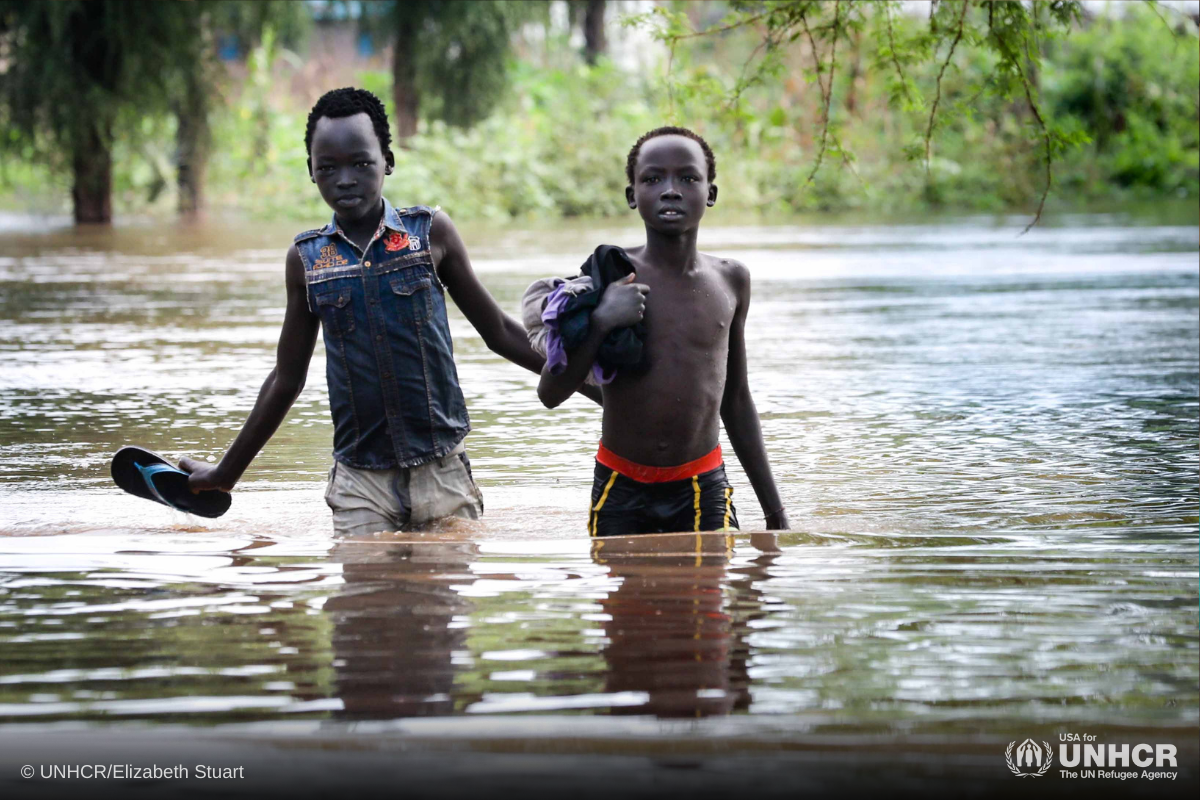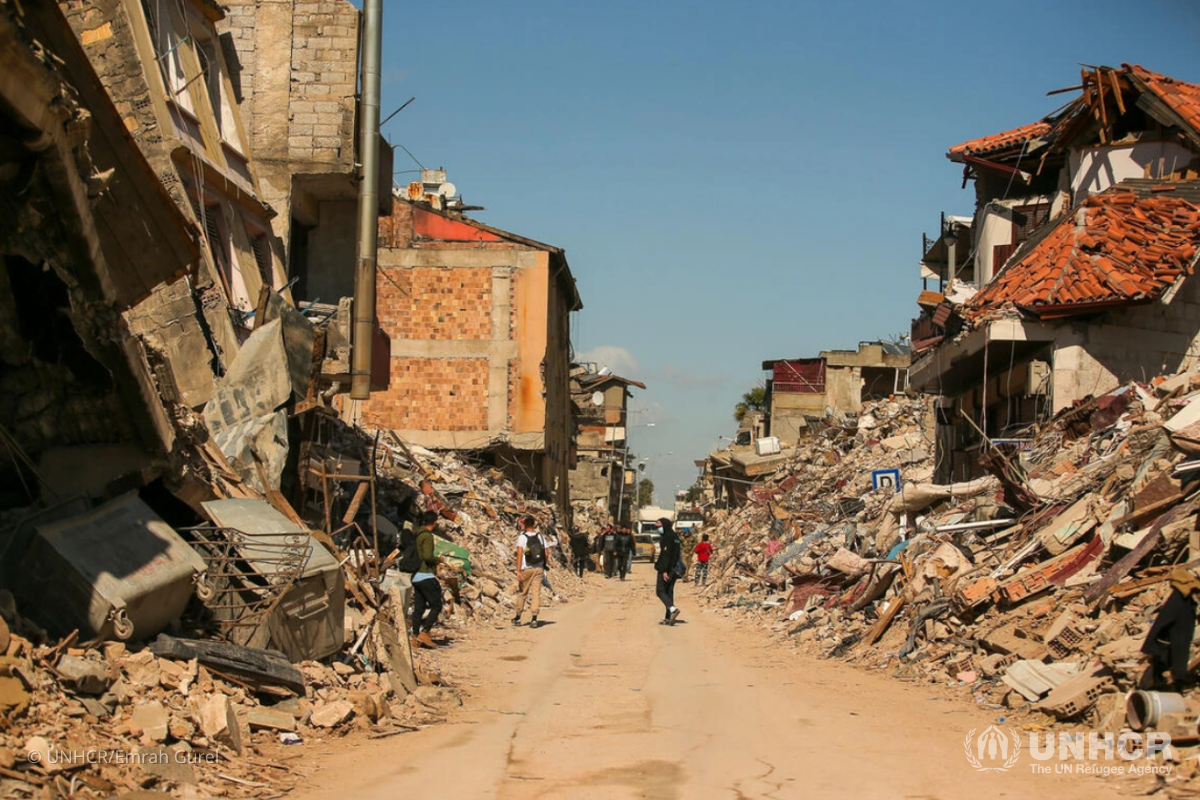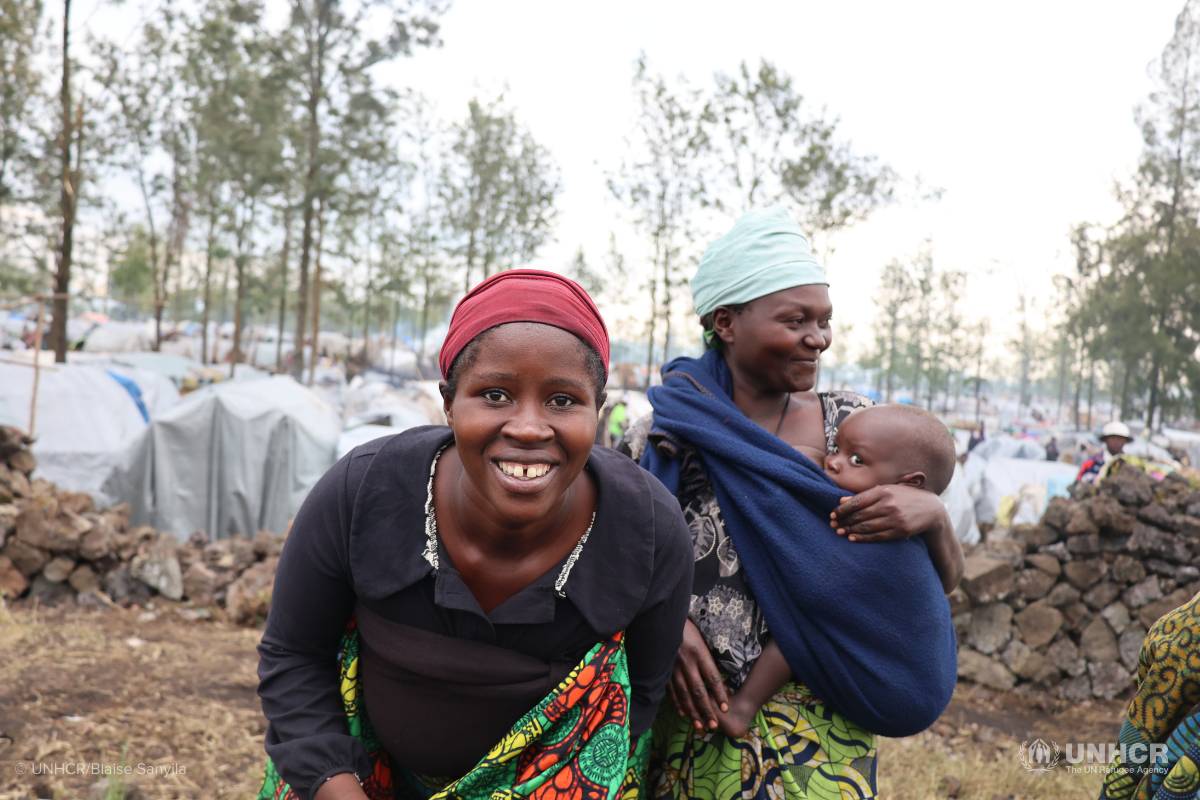How climate change impacts refugees and displaced communities
Isabella’s home was destroyed when Cyclone Idai hit her hometown in Mozambique. She still has vivid memories of that day.
“We suffered a lot. It caught us by surprise, we were eating and then the wind came. Some of the children were swept away by water. The trees were coming down, the houses were being destroyed,” she explains while her eyes are fixed on the horizon.
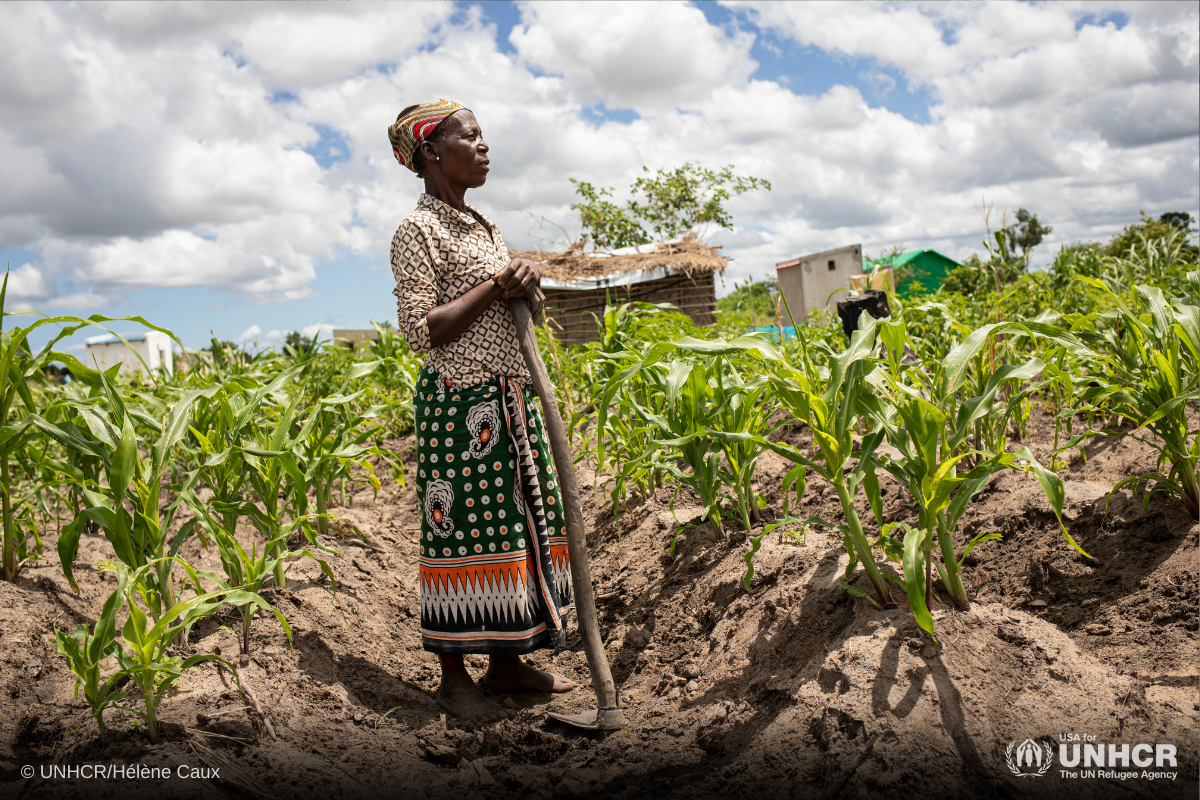
Isabella was able to escape the storm and found safe haven with her family in Savane settlement with 3,000 others who were also internally displaced. Two years later, she still dreams of returning home but is still too afraid to go back.
Like Isabella, nearly 32 million people were internally displaced by extreme weather events in 2022. In 2023, global temperatures reached new record highs and the year was marked by dozens of fires, floods and intense storms across the world. Climate change is the defining crisis of our time and its impacts are disproportionately experienced by people in vulnerable situations. But how does climate change impact refugees and displaced people?
Here’s What You Need to Know:
1. What’s the relation between climate change, conflict and displacements?
2. How does climate change impact refugees and displaced people?
3. How many people are displaced as a result of climate change?
4. Should we use the term “climate refugees”?
5. How is UNHCR addressing climate change and disaster displacement?
6. What can people do to help?
What’s the relation between climate change, conflict and displacements?
Climate change increases the risks of extreme weather events – like storms, floods, wildfires, heatwaves and droughts – making them more unpredictable, frequent and intense. At the same time, rising sea levels, droughts and drastic changes in rainfall patterns as a result of warmer temperatures can destroy crops and kill livestock, threatening livelihoods and exacerbating food insecurity - all of which can lead to massive displacement.
From Nicaragua to South Sudan, vulnerable communities around the world are already experiencing shortages in food, potable water, land and natural resources due to climate change. Competition over depleted natural resources can spark conflict between communities or compound pre-existing vulnerabilities. Climate change does not itself lead to conflict, but it can magnify the impact of other factors that can spark conflict.
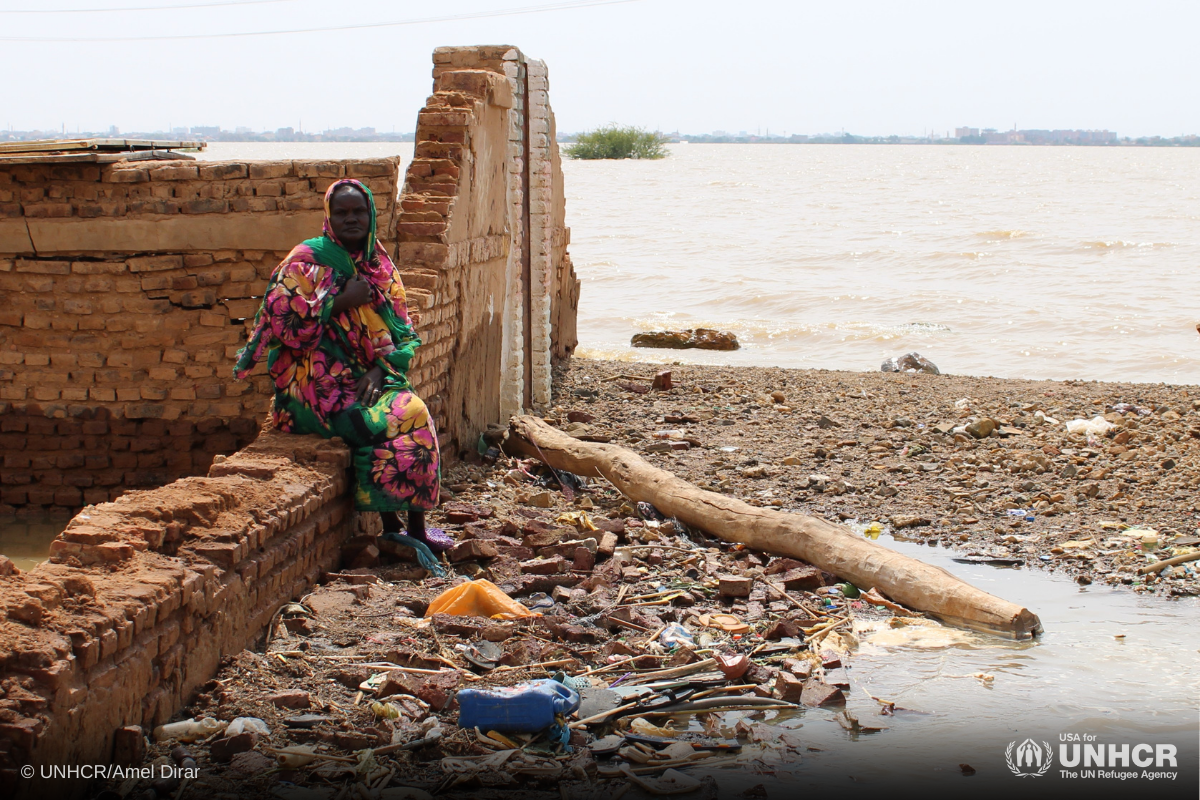
How does climate change impact refugees and displaced people?
Many refugee communities are located in ‘climate change hotspots’ - prone to the effects of climate change and natural disasters - which compromises their security and places them at risk of secondary displacement. In Bangladesh, for example, UNHCR, the UN Refugee Agency, is helping Rohingya refugees to mitigate the effect of monsoon storms, flooding and landslides.
Climate change and natural disasters can also be a source of potential conflict between refugees and their host communities if there is competition over natural resources, food, water and land rights. In the Sahel region of Western Africa, where one of the world’s fastest growing displacement crisis is taking place, temperatures are rising 1.5 times faster than the global average and changing weather patterns. The rising temperatures are jeopardizing agricultural activities in places where the majority of the population lives off the land, generating tensions that may lead to new displacement.
UNHCR has identified 22 countries where the effects of climate change will be most severe between now and 2030. These countries include regions heavily impacted by both conflict and climate change, including countries in the Eastern Horn of Africa, Afghanistan, Bangladesh, Ecuador, Honduras and more. Collectively, these countries host 52 percent of all internally displaced people, 24 percenter of all stateless people and 28 percent of all refugees.
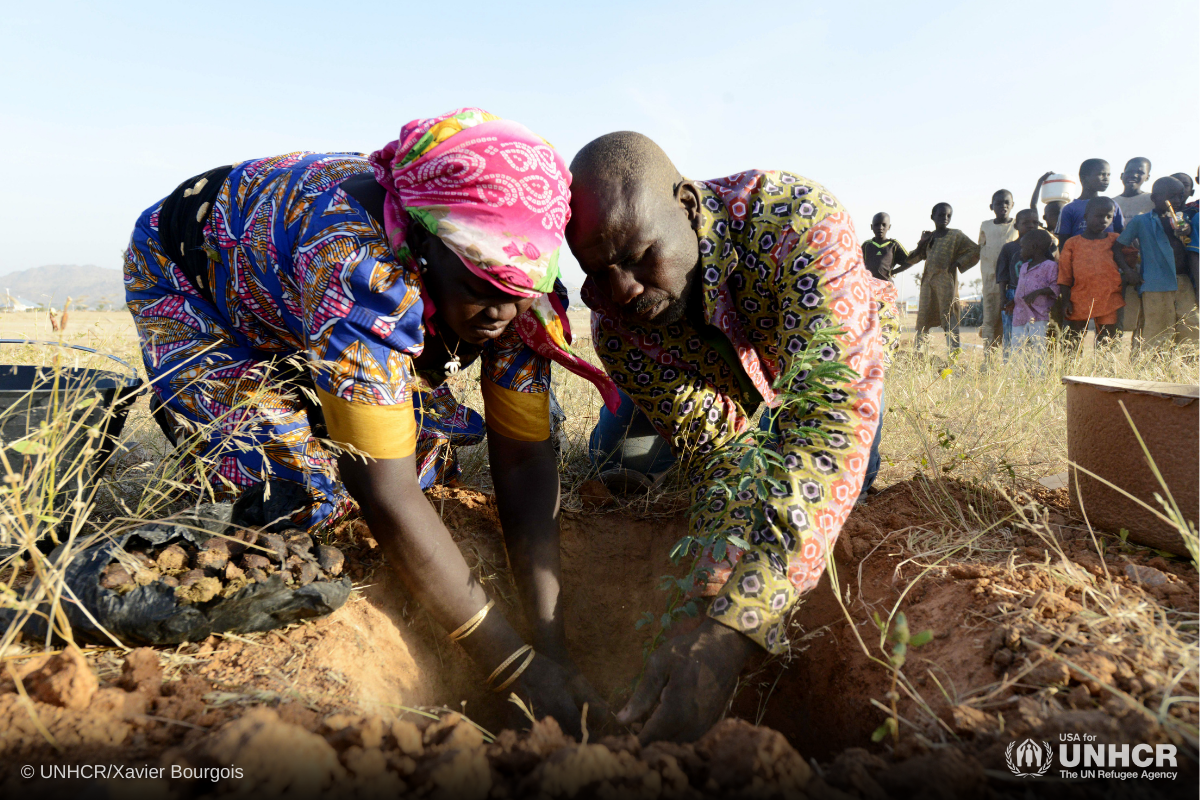
How many people are displaced as a result of climate change?
Climate change can clearly be seen in the increasing intensity and frequency of extreme weather events, such as abnormally heavy rainfall, prolonged drought, heatwaves and cyclones. Such hazards are already inducing some 23 million displacements of people from their homes each year, as an average based on data from the past decade. Most are internally displaced within their home countries, while some may also be impelled to cross borders in search of safety and protection.
According to the latest research, without dramatic action to mitigate climate change and significantly reduce the risk of climate disasters, by 2050, 200 million people will be in need of humanitarian assistance annually due to the effects of climate change.

Should we use the term “climate refugees”?
The term “climate refugees” does not exist in international law. A refugee is “a person who crosses international borders due to a well-grounded fear of persecution because of their race, religion, nationality, membership of a particular social group or political opinion” (1951 Refugee Convention). The majority of people displaced by climate change typically move within the borders of their own countries.
UNHCR does not endorse the use of the term “climate refugee” and holds that “persons displaced in the context of disasters and climate change” is more accurate.
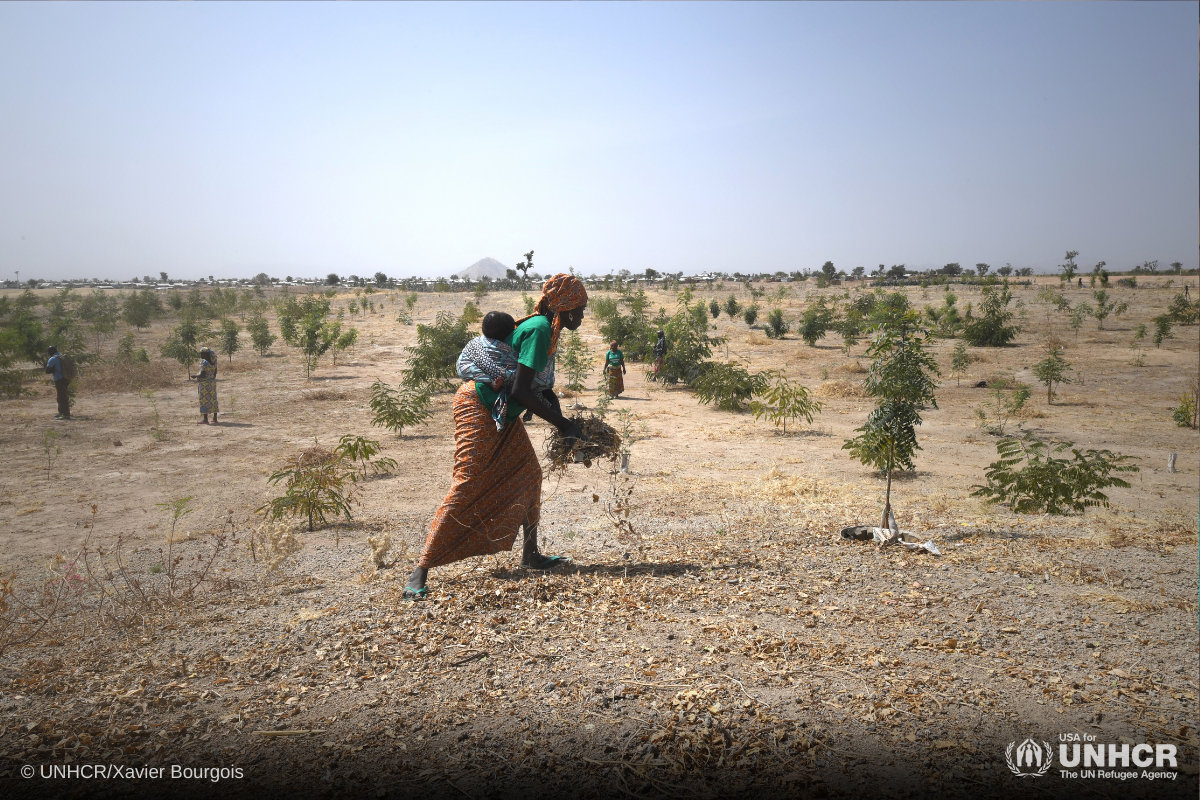
How is UNHCR addressing climate change and disaster displacement?
Since the 1990s, the UN Refugee Agency has worked to raise awareness about the consequences of climate change and on initiatives to ensure the protection of people displaced in the context of natural disasters.
UNHCR’s work on climate change includes working with governments to develop legal approaches to ensure the protection of people displaced by climate change - including the protection of internally displaced people - as well as promoting policy coherence between relevant stakeholders, conducting research to fill gaps in operational and policy work and developing activities to support people during disaster displacements.
UNHCR is also working to reduce the environmental footprint of refugee camps through the use of renewable energy, reforestation activities as well as increasing access to clean fuels and technology for cooking.
This work is all part of UNHCR's strategic framework for climate action, as they hope reduce the impacts of climate change and increase protections for displaced people by 2030. This includes continuing work to reduce carbon emissions and ensuring protections for displaced people, but also improving access to services that promote rights-based and sustainable use of natural resources in host communities.
What can people do to help?
Join us in calling on all governments to take urgent and decisive action to combat climate change by signing the USA for UNHCR climate petition today!
USA for UNHCR is asking governments to urgently promote measures to combat climate change and thus prevent the increase in forced displacement and the growing vulnerabilities of those already forced to flee, in accordance with the requests of the UN Secretary General. The human cost of inaction is too great. We cannot afford to wait.
